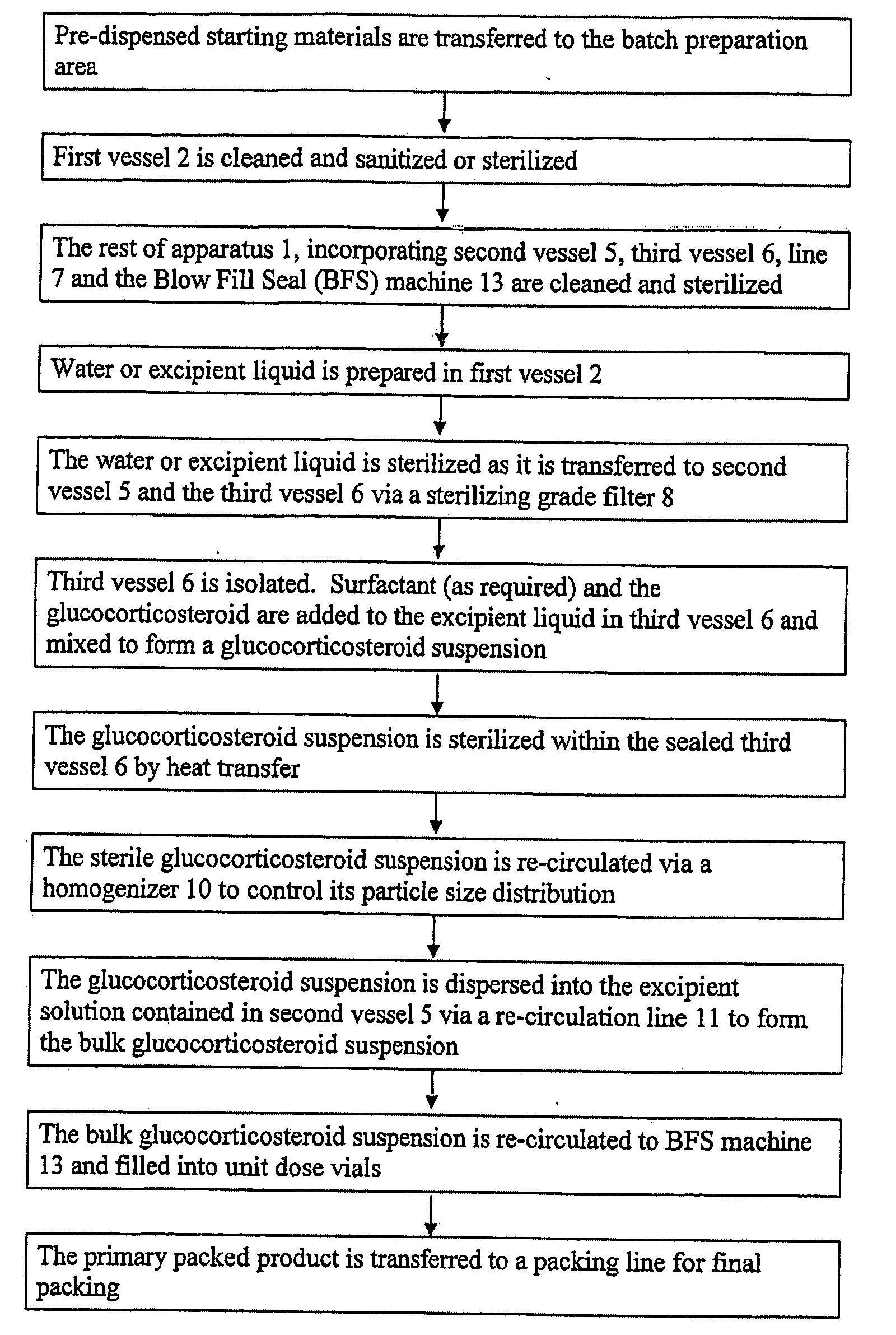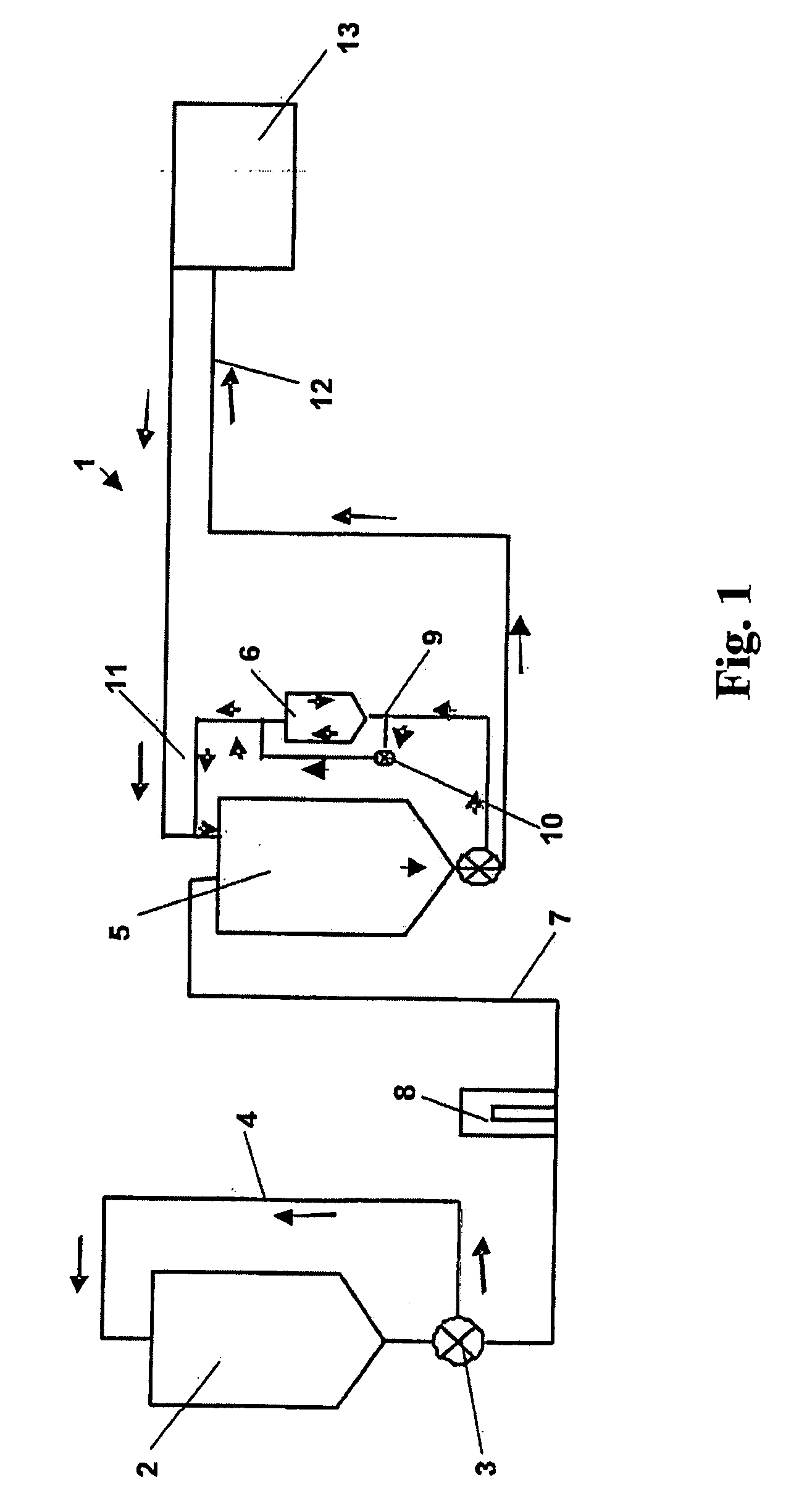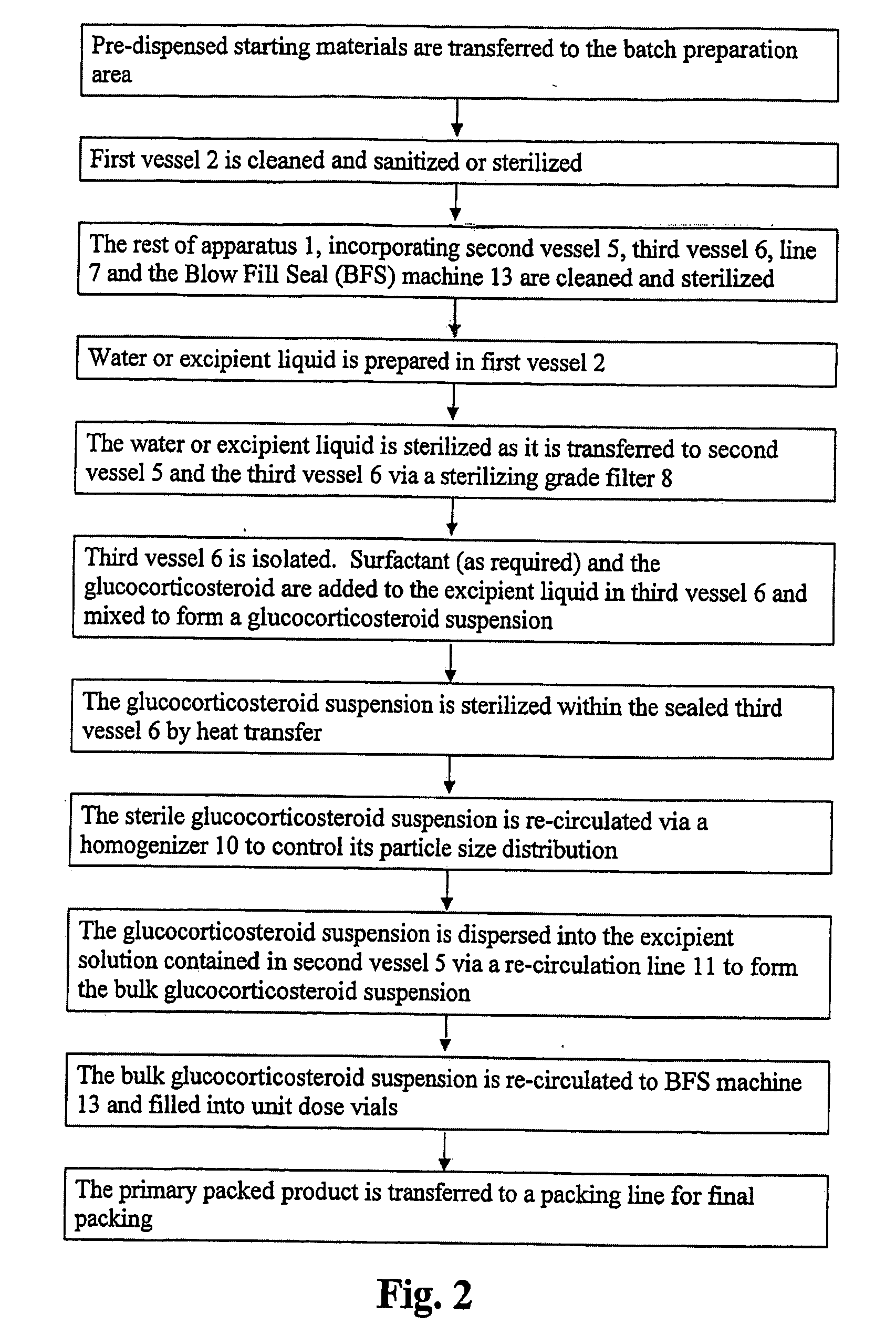Pharmaceutical Manufacturing Process For Heat Sterilized Glucocorticoid Suspensions
a technology of glucocorticoid suspension and manufacturing process, which is applied in the direction of aerosol delivery, spray delivery, immunological disorders, etc., and can solve the problems of shortened shelf life of contaminated drug products, unnecessary risk of secondary infection for patients, and loss of active drug products per s
- Summary
- Abstract
- Description
- Claims
- Application Information
AI Technical Summary
Benefits of technology
Problems solved by technology
Method used
Image
Examples
examples 1 to 3
Heat Sterilization of Budesonide
[0052]Three batches of a sterile budesonide suspension were prepared. Example 1 (applicant's batch W15711) contained 0.125 mg / ml of budesonide, Example 2 (applicant's batch W15641) contained 0.25 mg / ml of budesonide and Example 3 (applicant's batch Z00581) contained 0.5 mg / ml of budesonide.
[0053]A 500 L stainless steel mixing vessel was cleaned using hot water for injections (WFI) and steam sanitized. WFI at 25° C. was added to the vessel. The vessel was then charged with the following excipients in the following order: sodium chloride USP, citric acid monohydrate USP, tri-sodium citrate dihydrate USP, disodium edetate dihydrate USP and Polysorbate 80 USP from an additions hopper. For Examples 1 and 3, 80 g of Polysorbate 80 was added at this stage. For Example 2, 30 g of Polysorbate 80 was added at this stage. The quantities of each component are set out in Table 1. The solution was then re-circulated through a mixer and a stainless-steel line for 10...
examples 4 and 5
Heat Sterilization of BDP
[0063]Two batches of a sterile BDP (Beclomethasone Dipropionate) suspension were prepared. Example 4 (applicant's batch W16531) and Example 5 (applicant's batch W17211) both contained 0.4 mg / l ml of BDP.
[0064]A 500 L stainless steel mixing vessel was cleaned using hot water for injections (WFI) and steam sanitized. WFI at 25° C. was added to the vessel. The vessel was then charged with the following excipients in the following order: sodium chloride EP, Polysorbate 20 EP, and Span 20 EP from an additions hopper. For Example 4, 400 g of Polysorbate 20 was added at this stage. For Example 5, 475 g of Polysorbate 20 and 95 g of Span 20 were added at this stage. The quantities of each component are set out in Table 6. The solution was then re-circulated through a mixer and a stainless-steel line for 10 mins to ensure complete dissolution. During circulation, the additions hopper was rinsed with the circulating solution.
TABLE 6Materials in whole batchExample 4Exa...
PUM
| Property | Measurement | Unit |
|---|---|---|
| concentration | aaaaa | aaaaa |
| concentration | aaaaa | aaaaa |
| temperature | aaaaa | aaaaa |
Abstract
Description
Claims
Application Information
 Login to View More
Login to View More - R&D Engineer
- R&D Manager
- IP Professional
- Industry Leading Data Capabilities
- Powerful AI technology
- Patent DNA Extraction
Browse by: Latest US Patents, China's latest patents, Technical Efficacy Thesaurus, Application Domain, Technology Topic, Popular Technical Reports.
© 2024 PatSnap. All rights reserved.Legal|Privacy policy|Modern Slavery Act Transparency Statement|Sitemap|About US| Contact US: help@patsnap.com










